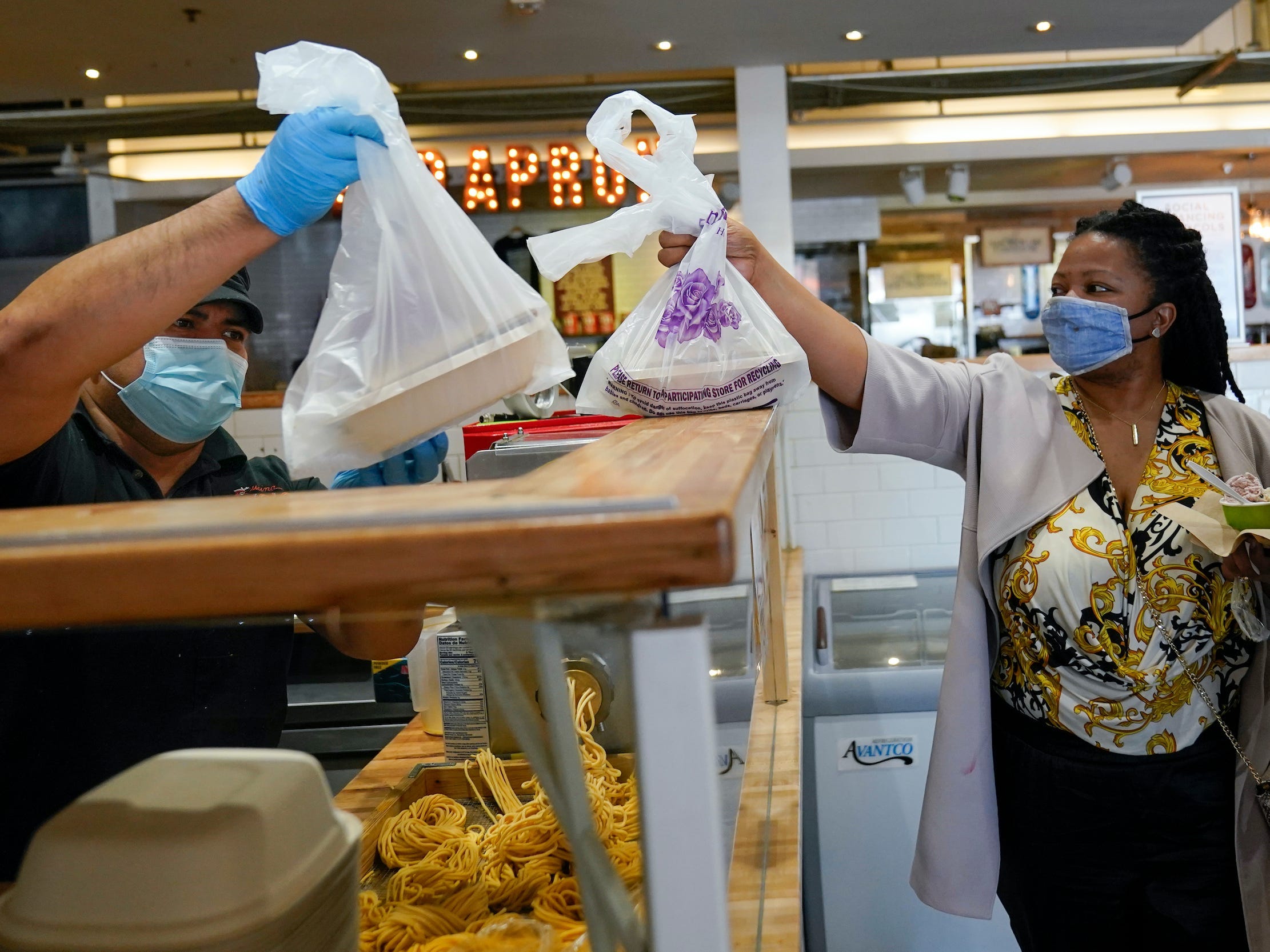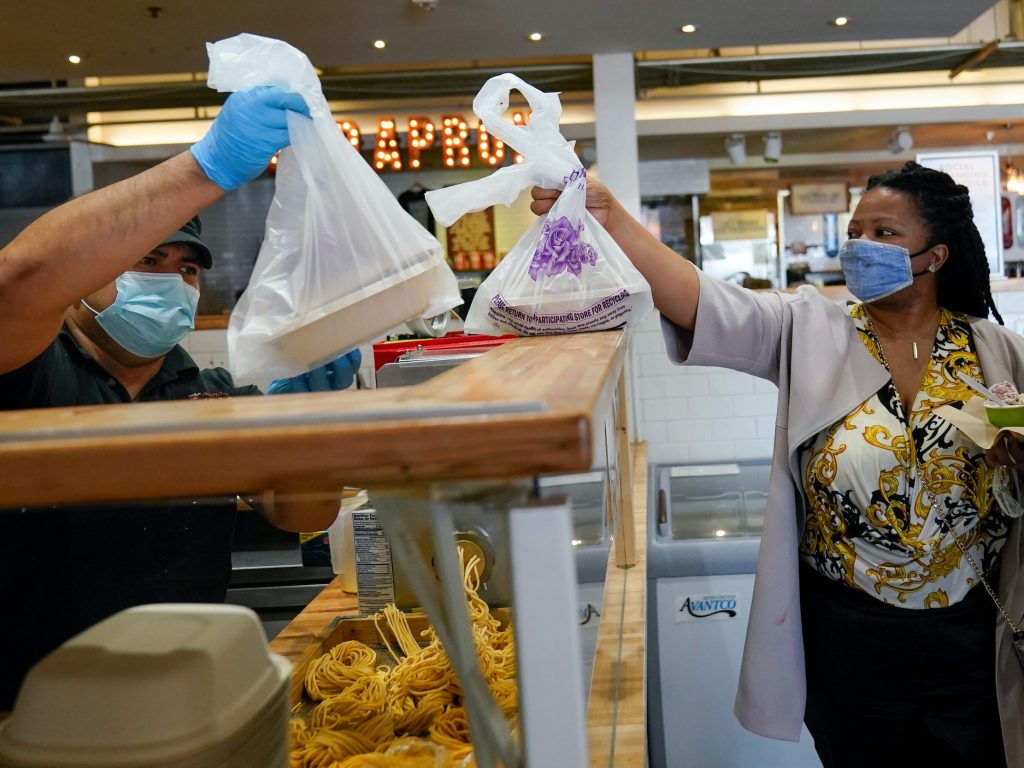
Carolyn Kaster/AP
- Restaurants are still facing a shortage of takeout containers, plastic cups, and straws.
- It's a side effect of the labor crunch, supply chain hiccups, and soaring demand.
- But it's also the result of the Texas storms, which severely impacted the plastics industry.
The restaurant industry is facing a shortage of plastic, the latest side effect of soaring demand, labor shortages, supply-chain hiccups, and storms in Texas earlier this year.
Restaurants are struggling to source plastic cups, straws, and takeout containers, as well as paper products like takeout packaging, amid growing demand for to-go orders. It has led many in the industry to scrounge for items like clear iced coffee cups and straws and pay higher prices to ensure adequate supplies, CNBC's Amelia Lucas reported.
"There was such a shortage that people said, 'I don't care about the price, just send it to me,'" David Pokorny, who works for food-service packaging distributor Imperial Dade, told CNBC.
Foodservice distributor US Foods told CNBC that it has had to take "aggressive steps" to mitigate the effects of the labor crunch and supply shortfalls, and that it may have to adjust orders for some of its customers due to "local challenges."
These issues have been hampering small businesses for months. Insider's Mary Meisenzahl reported in August that small, non-chain restaurants were having difficulty sourcing takeout containers because they were competing with larger chains.
Katy Arena, the owner of Katy's Cafe in Ellicottville, New York, told Insider at the time that she was having trouble finding to-go boxes, plastic cups, and plastic lids, and that she was ordering items and never receiving them. Another coffee-shop owner told the Hot Springs Sentinel Record that he's seen prices for cups, lids, and other types of packaging jump upwards of 50% in the last year.
These issues come as to-go orders are booming across the restaurant industry. At Starbucks, a rise in mobile orders has led to long lines and frustrated customers; at Chipotle, workers report a near-constant backlog of takeout orders in the queue. According to NPD Group data cited by CNBC, take-out orders from restaurants increased 20% in September versus the same period in 2019.
While high demand, increased shipping-container prices, backed-up ports, and issues filling vacant jobs are all contributing to the supply crunch, the Texas storms are also partially to blame. A surprise winter freeze struck the Gulf Coast in February, shutting down petrochemical plants in Texas, one of the largest exporters of plastics. Getting the plants back online was a challenging process that in some cases lasted months.
The Wall Street Journal reported in March that prices for polyethylene and polypropylene, two widely used plastics, were seeing their biggest jump in a decade. Perc Pineda, chief economist for the Plastics Industry Association, wrote in June that February's weather was "crippling supply" after it caused production of resin - a core plastic ingredient - to drop by 25% from the month prior.
A shortage of takeout containers isn't the only side effect of the Texas freeze. Propylene oxide is also a key ingredient in polyurethane foam, which is used in products like couches and mattresses, as well as the seats in cars. The ice storm shutting down those plants also hindered the foam industry, and while production has returned to normal levels, the industry still hasn't quite caught up to demand.

